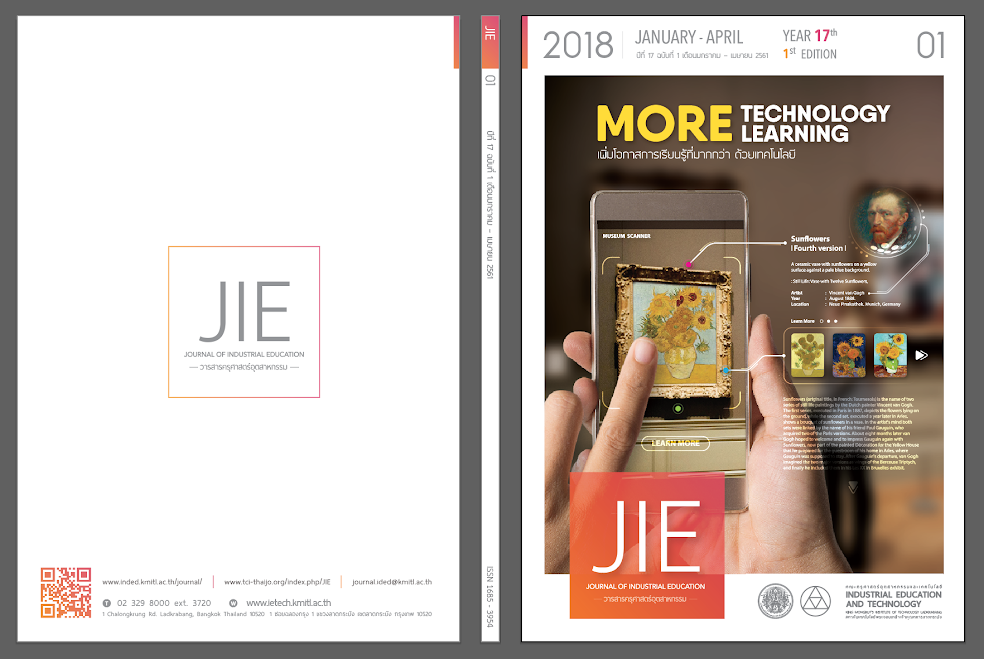THE STUDY OF ERGONOMICS TO REDUCE RISK OF WORK-RELATED MUSCULOSKELETAL DISORDERS AMONG MAIZE FARMERS IN LAMPANG PROVINCE
Keywords:
ergonomics, musculoskeletal disorders, risk, occupational health, maize farmersAbstract
The purpose of this research was to study ergonomics to reduce work-related musculoskeletal disorders (WMDS) occurred among maize farmers in Lampang province. Subjects (n=320) came from stratified random sampling. The research measures used in this study included risk assessment form for WMDS and focus group discussion were used to guideline. The descriptive statistics were used to carry out the analyses. The results of the study showed that the highest level of WMDS risks was in the process of harvesting maize. By this, 93.13% was the working postures, ways of exerting force and inappropriate ways of stretching limbs. This followed by 86.25% which came from the ways of repeatedly using hands and arms. The assessment results, using RULA techniques, showed that the average score was 7. This indicated that the ergonomic problem must be improved. The participatory ergonomics approach to solve this problem consists of four processes: 1) training, 2) hazards identification 3) risk reduction, and 4) improvement. During this study, all the processes were carried out by the farmers. In addition, they have suggested the methods of reducing WMDS risks in both management and raising awareness for farmers to be able to independently learn and find methods of reducing risks under an appropriate circumstance.
References
[2] Mueang Pan Agricultural Office. Agriculture Economy. Search on January 1, 2018, From: https://mueangpan.lampang.doae.go.th/index.html
[3] National Statistical Office. The Informal Employment Survey 2017. Bangkok : Department of National Statistical Office. Ministry of Digital Economy and Society.
[4] Nithimar Sermsuti-Anuwat and Pornchai Sithisarankul. 2016. Work-Related Musculoskeletal Disorders Among Dentists. Journal of the Dental Association of Thailand, 67(2), p.72-80.
[5] Van Eerd et al. 2010. Process and implementation of participatory ergonomic interventions: a systematic review. Ergonomics, 53(10), p. 1153-1166.
[6] Krejicie, R. and Morgan, D. 1970. Determining Sample Size for Research Activities. Journal Educational and Psychological Measurement, 30(3), p. 607-610.
[7] Bureau of Occupational and Environmental Diseases. Risk Assessment Form for Musculoskeletal Disorders. Search on February 1, 2018, From: September 1, 2017, From https://odpc5.ddc.moph.go.th
[8] McAtamney, L. and Corlett E.N. 1993. RULA: A survey method for the investigation of work-related upper limb disorders. Applied Ergonomics, 24(2), p. 91-99.
[9] Wiwat Sungkhabut and Sunisa Chaiklieng. 2011. Musculoskeletal Disorders Among Informal Sector Workers of Hand-Operated Rebar Bender: A Pilot Study. Srinagarind Medical Journal, 26(3), P. 225-232.
[10] Rungklo Tomthong and Woranat Sangmanee. 2560. Perception toward safety system and safety behavior of production operator in bakery manufacturing company in ladkrabang industrial estates. Journal of Industrial Education, 16(1), p. 68-75.
[11] Hartman E., et al. 2005. Exposure to physical risk factor in Dutch agriculture: effect on risk leave due to musculoskeletal disorders. International Journal of Industrial Ergonomics, 35(11), p. 1031-1045.
[12] Chantana Chantawong Nisakorn Krungkraipetch and Yupa Dowruong. 2559. Participatory ergonomics intervention to reduce risk factors of work related musculoskeletal disorders in smoked rubber plant, rayong province. Journal of Public Health Nursing, 30(1), p. 76-86.
[13] Kawakami T. 2007. Participatory approaches to improving safety, health and
working conditions in informal economy workplaces - Experiences of Cambodia, Thailand and Viet Nam. Bangkok : ILO Subregional Office for East Asia.
[14] Tippawan Sirirat Chanin Srisuwannapa and Nuttawut Rojniruttikul. 2557. Factors affecting perception toward safety OHSAS 18001 system of operator in thai Nippon steel engineering & construction corporation. Journal of Industrial Education, 13(1), p. 125-132.
Downloads
Published
How to Cite
Issue
Section
License
"The opinions and contents including the words in papers are responsibility by the authors."
"ข้อคิดเห็น เนื้อหา รวมทั้งการใช้ภาษาในบทความถือเป็นความรับผิดชอบของผู้เขียน"



